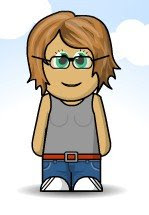At times this week, I have genuinely wished I had done this placement before I accepted my medical school place. Much shorter training, more immediate patient responsibility, opportunity to give immediate treatment, on-scene trauma work (not that I've seen this yet), and the whole adrenaline rush of driving on red :D And the thrill of giving immediate emergency care doesn't seem to wear off. The EMT I was with on my night shift was shaking as much as I was on our last case.
I know that if I actually trained as a para, I'd eventually want to go back to med school and be a doctor, but in the immediate future... I can't help but wish. 5 years is a lot of debt.
Emergency med is looking increasingly appealing. I've read all the warnings that A&E is becoming just a triage site for the specialties, but there are hopes that EM will move out into pre-hospital care, and that potential future excites me more than the current state of EM. Pre-hospital gives the chance to use the usual skills of resuscitation and stability of the emergency patient, but without the huge amount of back up a hospital A&E provides. More initiative required. More improvisation. Dealing with a patient with DIB with a trache, the trache didn't have any fixtures for attachments to add o2 lines or a BVM or a neb, so a pedi mask was altered with various bits of tubing and tape to fit over the trache to administer o2 and nebs.
I'm awaiting an email from the ambu manager about potential placements with their anaesthetics reg who does voluntary BASICS work with them. Also air ambulance, for more experience with sicker patients and (fingers crossed!) trauma.
I have learnt so much from this week. Not just about how the ambulance service works, and how it fits in with the other professions and the overlap of care, but also about patient care. I can do basic obs with more confidence, and in the back of a moving vehicle. I've got more tips on how to cannulate, when I'm eventually let loose on patients. I can identify warning signs of major problems. I've learnt about BP lowering on the left in an AAA. About the decision process of pharmalogical intervention, in the case of adrenaline, atropine, and adenosine/amiodarone (I'm not entirely sure which one I mean, since it's just 'that one beginning with A' to me...), and morphine/entonox, plus pre/post morphine use of cyclizine (50mg diluted in 10ml water/saline). Immobilisation of fractures. Assessing for injury.
And that old chestnut - everyone lies.
Subscribe to:
Post Comments (Atom)

No comments:
Post a Comment